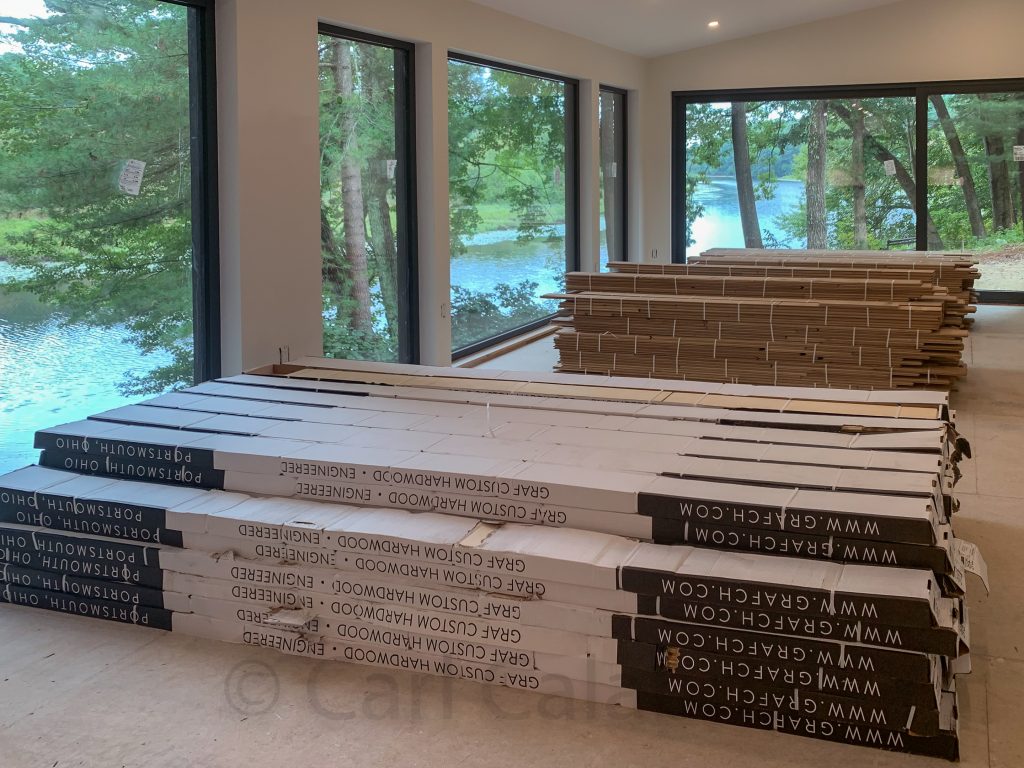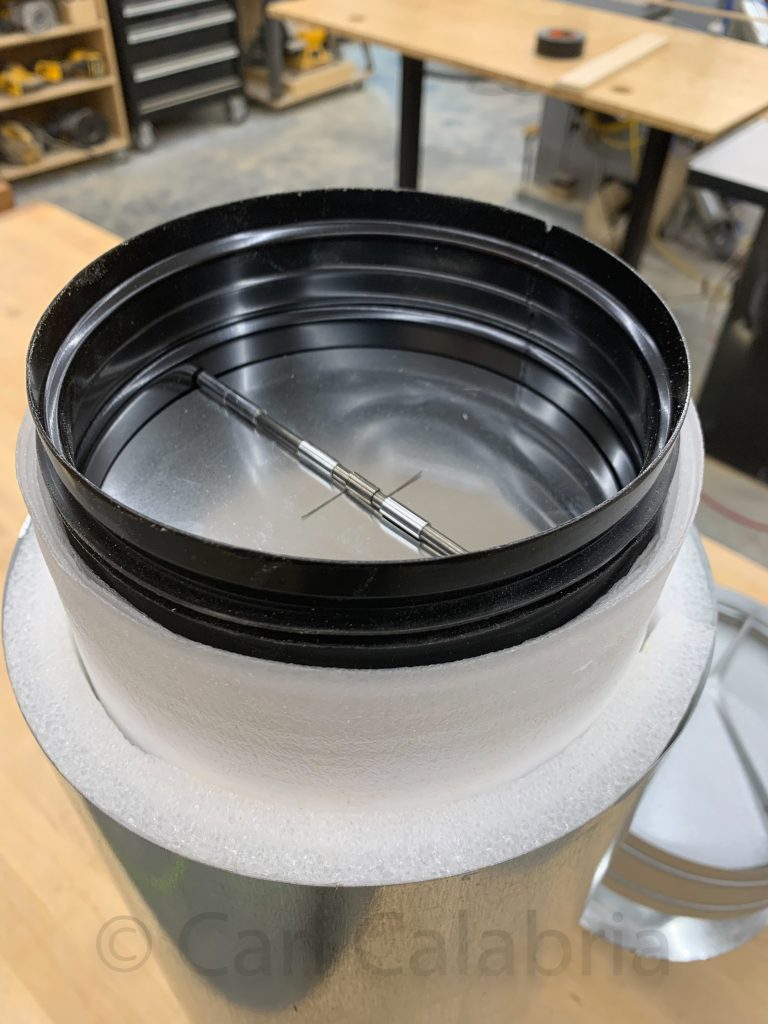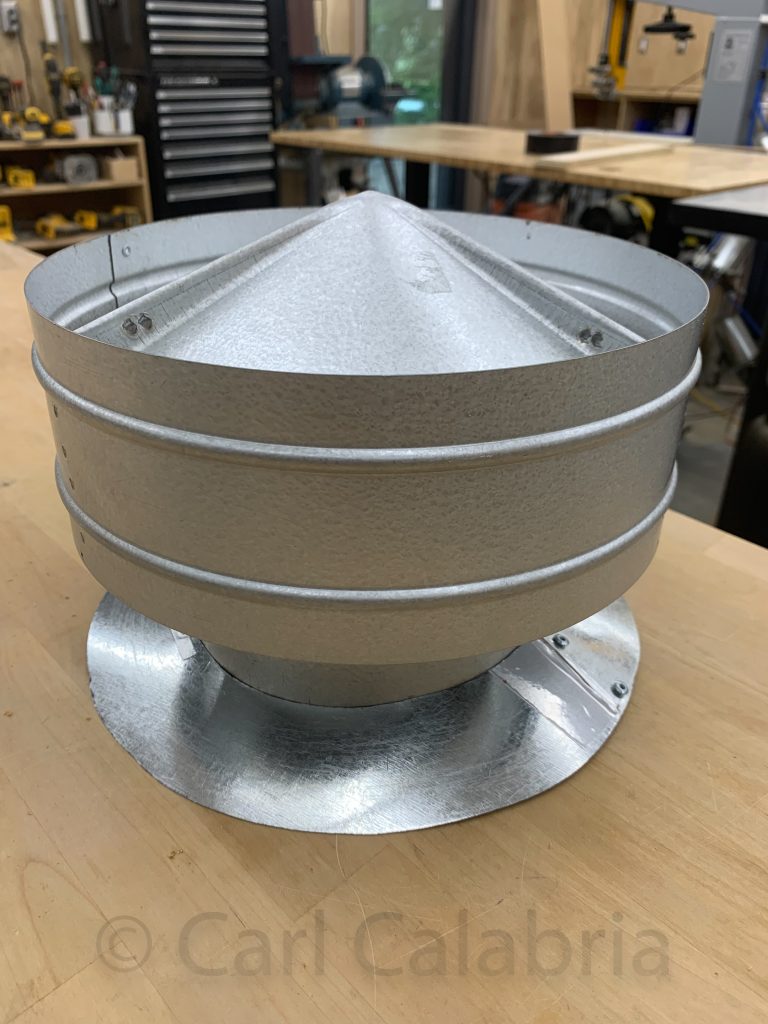
The River House will have white oak flooring throughout except for tiled areas and the basement. The great room will have 6″ wide engineered planks and the remainder of the house will be 5″ solid wood. All of this was delivered this morning and will acclimate to the humidity in the house for several days before it is installed.
I spent much of the day engineering a solution for the cooktop vent hood roof outlet. Our vent exits the house vertically. The roofers installed a vent cap that is typically used for side wall installations. It will work OK unless there is heavy snow in which case it will become entirely blocked. Furthermore, it represents the single largest penetration of the house envelope and all that separates the inside from the outside is a butterfly valve made of a thin piece of galvanized steel. Surprisingly, neither I nor our builder could find an acceptable off-the-shelf solution for a low pitch roof such as ours. Therefore, I took it upon myself to design a solution to address four key challenges; (1) condensation management, (2) air sealing, (3) insulation, and (4) operation during and after heavy rain or snowfall. When hot humid air is vented during the winter it will come into contact with the cold galvanized pipe exiting the roof. Condensation will form and eventually drip down from the hood onto the cooktop. The butterfly valve used to prevent backdraft that was supplied with the vent hood was a cheap piece of shit with huge gaps for air to leak through.
My design includes the following elements. I used two high quality butterfly valves, one just under the roof cap and the other just after the blower motor. This results in a trapped column of air which provides a measure of insulation and reduces air infiltration by a factor of two not to mention the improvements based on the use of really well engineered butterfly valves. Second, I reduced the 8 inch exhaust pipe diameter to 6 inches at the roof exit decreasing the size of the hole from 50 in2 to 28 in2. Normally, you want to keep the pipe as large as possible to maximize airflow. Since our vent goes straight up through the roof it is already very short with no turns so the increased resistance is a non issue compared to the benefit of a much smaller opening. Once the 6 inch pipe exits the roof, I surround it with an 8″ pipe. Between the two is an inch of insulation which will keep the pipe in contact with the exhaust air much warmer. The external pipe will rise 24 inches above the roof. If the snow ever gets that high, I will need to remove it for weight considerations anyway. Finally, I am using an off the shelf cap that has a built in insect screen and is designed to prevent infiltration from lateral rain. I added a sloped skirt at the bottom to shed rain and snow from the larger 8 inch pipe. I am fairly confident that this solution will address the key challenges. I am 100% sure that it represents a huge improvement from what was initially installed.
I should also mention that we will be operating the house under very slight positive pressure. This is done by adjusting our ERV to provide slightly more fresh air than the amount we extract. Doing so should help prevent dirt and insects from getting in when doors are opened and when they are not, the excess air will exit up through the exhaust hood preventing any cold air drafts from entering the kitchen.


